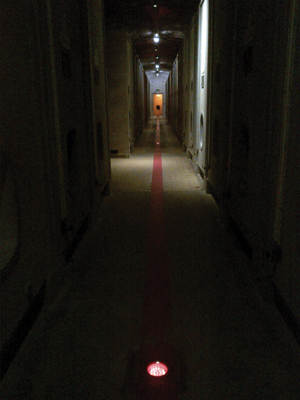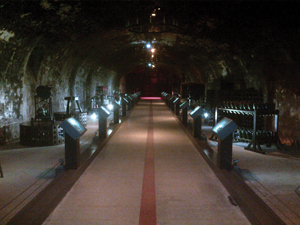Robert Nemeth is going underground
I know all too well that Brighton & Hove has more than its fair share of subterranean spaces. I’ve had a lot of fun in exploring its plethora of cellars, tunnels, arches and reservoirs over the past ten years. But this did little to prepare me for the labyrinthian tunnels beneath Reims.

Reims is the largest city in the Champagne region in the north-east of France. It is home to a number of the most famous champagne houses including Louis Roederer, Piper Heidsieck, Taittinger and Veuve Clicquot. I was lucky enough to partake in a tour of the vast hidden tunnels of G. H. Mumm, the Champagne house that is well known by all F1 fans.

Mumm was founded in 1827 by three German brothers from the Rhine Valley. The family kept their German citizenship which actually led to their property being confiscated by the French during the First World War, despite their huge contribution to France over the previous century.
Upon arriving at the Mumm estate, which is characterised by a series of attractive low-rise classically-inspired structures, we were shown into a generous reception area, and then quickly ushered into a small cinema for a film about the firm’s history. We then descended a slim staircase into the first basement level.
At this depth, the various rooms and passages were stone-lined. A cheerful tour guide gave insight into how the grapes from the various fields which are owned by Mumm are turned into world-class champagne by blending, fermenting and cleaning. Our knowledge of champagne bottle sizes was put to the test (I got stuck at Nebuchadnezzar). The cellars at this point were unexpectedly cavernous, but nothing compared to what came next.
A tight spiral staircase took us down into a maze of storage tunnels that snake out beneath Reims in every direction. 25 million bottles are stored in the 25km network. One tunnel was 1km long. At this depth, the tunnels had simply been carved out of the chalk. A constant temperature of 11˚C and humidity of 85 per cent are perfect for the purpose which they serve.
Some of the tunnels beneath Reims date back to Roman times, though those of Mumm are not that old. It is fascinating that the historic buildings and tunnels have been integrated, side by side, into such a slick modern operation. The ‘CAVES’ button on a sleek steel elevator really hit this home.
robert@buildingopinions.com, www.buildingopinions.com
Follow me: @robert_nemeth




















